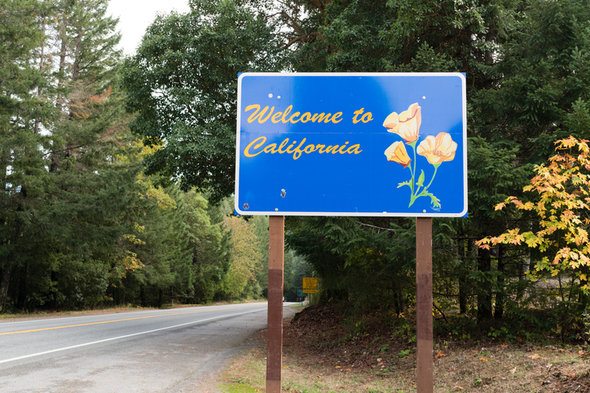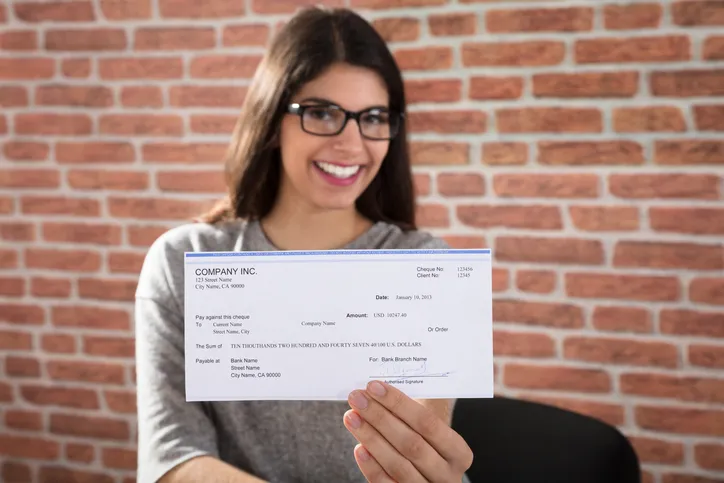

Governments, at all levels, may charge sales tax for goods and services. Retailers collect sales tax on their goods at the point of sale and then send their collections to the government. Currently, 45 states charge sales tax with some counties and cities charging their own taxes. No state has quite perfected the art of sales tax like California. The California Department of Tax and Fee Administration (CDTFA), which administers tax and fee collection, shows that California cities charge a myriad of different sales tax rates. So what can you expect to pay and where does all that money go?
Need help creating a financial plan or managing your investments? A financial advisor can help. Find a trusted advisor today.
A financial advisor may be able to help. Match with an advisor serving your area today.
The minimum sales tax in California is 7.25%. This tax does not all go to the state, though. The true state sales tax in California is 6%. The state then requires an additional sales tax of 1.25% to pay for county and city funds, those funds could take the total in some jurisdictions up to a total of 10.25%. All in all, you’ll pay a sales tax of at least 7.25% in California. That’s one of the highest in the U.S., which isn’t much of a surprise since California residents pay some of the highest taxes in the country.
However, you’ll probably pay an even higher rate when you go shopping in California. On top of the state’s minimum sales tax, individual counties and cities also charge a sales tax. Only about a quarter of the cities in California actually charge a sales tax of 7.25%.
As an example, consider Los Angeles County. The county has a sales tax of 9.5%. Within the county, a handful of cities charge a higher sales tax. So if you buy something in downtown Los Angeles, you’ll pay a sales tax of 9.5%. If you drive 25 minutes (an hour with traffic) to buy something in Culver City, you’ll pay a sales tax of 10.25%.
All told, the cities and counties of California charge sales tax at 25 different rates. This can make it especially hard for travelers who plan to visit multiple cities across the state. Luckily, the state of California provides an online tool that lets you look up sales tax by address. The table below includes the 2022 sales tax rates in all 58 of California’s counties. Remember that cities within a county may collect additional sales tax.
| County | State Rate | County Rate | Total Sales Tax |
| Alameda | 7.25% | 3.00% | 10.25% |
| Alpine | 7.25% | 0% | 7.25% |
| Amador | 7.25% | 0.50% | 7.75% |
| Butte | 7.25% | 0% | 7.25% |
| Calaveras | 7.25% | 0% | 7.25% |
| Colusa | 7.25% | 0% | 7.25% |
| Contra Costa | 7.25% | 1.50% | 8.75% |
| Del Norte | 7.25% | 1.25% | 8.50% |
| El Dorado | 7.25% | 0% | 7.25% |
| Fresno | 7.25% | 0.725% | 7.975% |
| Glenn | 7.25% | 0% | 7.25% |
| Humboldt | 7.25% | 0.50% | 7.75% |
| Imperial | 7.25% | 0.50% | 7.75% |
| Inyo | 7.25% | 0.50% | 7.75% |
| Kern | 7.25% | 0% | 7.25% |
| Kings | 7.25% | 0% | 7.25% |
| Lake | 7.25% | 0% | 7.25% |
| Lassen | 7.25% | 0% | 7.25% |
| Los Angeles | 7.25% | 2.25% | 9.50% |
| Madera | 7.25% | 0.50% | 7.75% |
| Marin | 7.25% | 1.00% | 8.25% |
| Mariposa | 7.25% | 0.50% | 7.75% |
| Mendocino | 7.25% | 0.625% | 7.875% |
| Merced | 7.25% | 0.50% | 7.75% |
| Modoc | 7.25% | 0% | 7.25% |
| Mono | 7.25% | 0% | 7.25% |
| Monterey | 7.25% | 0.50% | 7.75% |
| Napa | 7.25% | 0.50% | 7.75% |
| Nevada | 7.25% | 0.25% | 7.50% |
| Orange | 7.25% | 0.50% | 7.75% |
| Placer | 7.25% | 0% | 7.25% |
| Plumas | 7.25% | 0% | 7.25% |
| Riverside | 7.25% | 0.50% | 7.75% |
| Sacramento | 7.25% | 0.50% | 7.75% |
| San Benito | 7.25% | 1.00% | 8.25% |
| San Bernardino | 7.25% | 0.50% | 7.75% |
| San Diego | 7.25% | 0.50% | 7.75% |
| San Francisco | 7.25% | 1.375% | 8.625% |
| San Joaquin | 7.25% | 0.50% | 7.75% |
| San Luis Obispo | 7.25% | 0% | 7.25% |
| San Mateo | 7.25% | 2.125% | 9.375% |
| Santa Barbara | 7.25% | 0.50% | 7.75% |
| Santa Clara | 7.25% | 1.875% | 9.125% |
| Santa Cruz | 7.25% | 1.75% | 9.00% |
| Shasta | 7.25% | 0% | 7.25% |
| Sierra | 7.25% | 0% | 7.25% |
| Siskiyou | 7.25% | 0% | 7.25% |
| Solano | 7.25% | 0.125% | 7.375% |
| Sonoma | 7.25% | 1.25% | 8.50% |
| Stanislaus | 7.25% | 0.625% | 7.875% |
| Sutter | 7.25% | 0% | 7.25% |
| Tehama | 7.25% | 0% | 7.25% |
| Trinity | 7.25% | 0% | 7.25% |
| Tulare | 7.25% | 0.50% | 7.75% |
| Tuolumne | 7.25% | 0% | 7.25% |
| Ventura | 7.25% | 0% | 7.25% |
| Yolo | 7.25% | 0% | 7.25% |
| Yuba | 7.25% | 0.50% | 7.75% |

As mentioned above, the California sales tax is 7.25%. All cities must collect at least this much in sales tax. Only 6% actually goes to the state though. The remaining 1.25% goes toward county funds. Let’s take a look at where that money is going. (You can also see this breakdown in the table below.)
The state’s 6% goes to a few different places. The majority of that money, 3.9375%, goes to the general fund that California’s government uses to finance itself. Another 1.0625% goes toward a Local Revenue Fund that the state established in 2011. The money in this fund pays for public safety programs and services. The remaining state sales tax revenue is split between two funds. A Local Public Safety Fund gets 0.5% to support local criminal justice activities. A Local Revenue Fund, which supports health and social service programs, gets the final 0.5%.
The remaining 1.25% of the California sales tax is a county tax. The entire state must pay this tax and the money all goes to county and/or city governments. The 1.25% breaks down into two different funds. County or city operational funds get 1%. The last 0.25% goes toward county transportation funds.
So if the California sales tax is 7.25%, why do some cities charge higher rates? The additional tax that a county or city collects can go toward a number of things. Public transportation programs commonly receive funding through these taxes. Some areas use sales tax as a way to pay for county-wide initiatives. For example, Los Angeles County increased its sales tax in October 2017 to raise money for fighting homelessness.
| Rate (%) | Jurisdiction | Purpose of Tax |
| 3.9375 | State | State’s General Fund |
| 0.50 | State | Local Public Safety Fund to support local criminal justice activities |
| 0.50 | State | Local Revenue Fund for local health and social services programs |
| 1.0625 | State | Local Revenue Fund 2011 |
| 1.25 | Local | 0.25% for county transportation funds 1% for city or county operational funds |
Sales tax applies to most goods and services that you purchase. This includes everything from clothing to restaurant meals. Like other states, certain things in California are exempt from sales tax. It isn’t necessary to pay taxes on groceries or unprepared foods that you buy from a grocery store. You also don’t have to pay sales tax on plants or seeds used for food, livestock and prescription drugs.
Some things are tax-exempt in specific situations. You might not have to pay sales tax on hot drinks and bakery goods depending on how you buy them. There are also goods, like farm machinery, that are subject to a partial sales tax.
Sales tax varies across the state so some items have specific rules to prevent shoppers from buying things in certain places in order to pay less sales tax. Vehicles are a good example. If you buy a car in California, your sales tax is based on where you register the car and not where you buy the it.
If you are unsure whether or not you have to pay sales tax on a specific item or good, you should check local and state laws. They will explain the specifics of sales tax and they also remain up to date as tax rates change.

Most states charge a sales tax on select goods and services, but California is in a league of it’s own. The California sales tax is a minimum of 7.25%. Not only is this the highest base rate in the country, but some counties and cities charge even higher rates, up to 10.25% So if you plan to go shopping anywhere in California, look up the sales tax of any counties and cities you plan to visit. You’ll find the most current rates through the California Department of Tax and Fee Administration.
Photo credit: ©iStock.com/ChrisBoswell, ©iStock.com/Xesai, ©iStock.com/lisegagne
Derek Silva, CEPF®Derek Silva is determined to make personal finance accessible to everyone. He writes on a variety of personal finance topics for SmartAsset, serving as a retirement and credit card expert. Derek is a Certified Educator in Personal Finance® (CEPF®). He has a degree from the University of Massachusetts Amherst and has spent time as an English language teacher in the Portuguese autonomous region of the Azores. The message Derek hopes people take away from his writing is, “Don’t forget that money is just a tool to help you reach your goals and live the lifestyle you want.”
Read More About Taxes



More from SmartAsset
SmartAsset Advisors, LLC ("SmartAsset"), a wholly owned subsidiary of Financial Insight Technology, is registered with the U.S. Securities and Exchange Commission as an investment adviser. SmartAsset's services are limited to referring users to third party advisers registered or chartered as fiduciaries ("Adviser(s)") with a regulatory body in the United States that have elected to participate in our matching platform based on information gathered from users through our online questionnaire. SmartAsset receives compensation from Advisers for our services. SmartAsset does not review the ongoing performance of any Adviser, participate in the management of any user's account by an Adviser or provide advice regarding specific investments.
We do not manage client funds or hold custody of assets, we help users connect with relevant financial advisors.
This is not an offer to buy or sell any security or interest. All investing involves risk, including loss of principal. Working with an adviser may come with potential downsides such as payment of fees (which will reduce returns). There are no guarantees that working with an adviser will yield positive returns. The existence of a fiduciary duty does not prevent the rise of potential conflicts of interest.